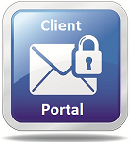Employee Business Expense Tax Deduction Explained
One major difference between being an employee and being self-employed is how you deduct the expenses you incur related to your work. If you are self-employed, you’re able to deduct expenses on your business schedule, but is you are an employee you are limited to deducting them as itemized deductions.
In other words, self-employed individuals benefit by deducting their expenses directly on their business schedule, which can then result in a reportable business loss if the expenses exceed their business income.
However, an employee can only deduct employee business expenses on an IRS Form 2106, and the total from the 2106 is deducted as a miscellaneous itemized deduction. Therefore, in order to claim employee business expenses, the employee is forced to itemize their deductions and cannot utilize the standard deduction. In addition, the employee’s business expenses fall into a category that is reduced by 2% of the employee’s adjusted gross income (AGI), which means that if the employee’s AGI for the year is $100,000, for example, only job-related expenses—combined with other miscellaneous expenses in that category—in excess of $2,000 (2% of $100,000) would be deductible. In addition to that, miscellaneous itemized deductions are not deductible at all under the alternative minimum tax (AMT). Therefore, if an individual is subject to the AMT, he or she may gain little or no tax benefit from employee business expenses.
Employee business expenses are unreimbursed expenses that are both ordinary (common and accepted in your industry) and necessary (appropriate and helpful in business) and do not include personal expenses. Although not all-inclusive, examples of allowed expenses include the costs of tools, job-related education, job-seeking expenses, business travel away from home, and business use of a car and home.
Please contact us should you have questions related to employee business expenses and strategies to deduct them, such as bunching deductions, taking advantage of fast write-off provisions of the tax law, or working out a tax-favored reimbursement plan with your employer.






Leave a Reply